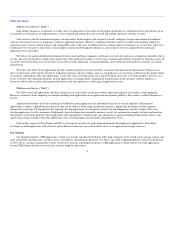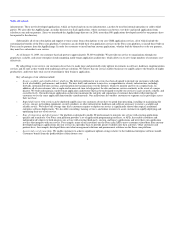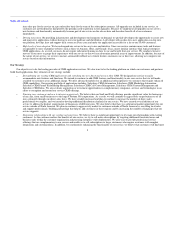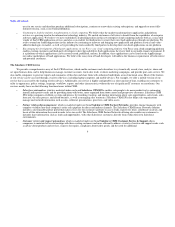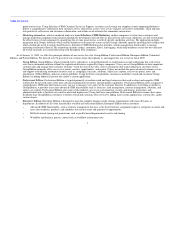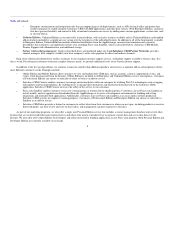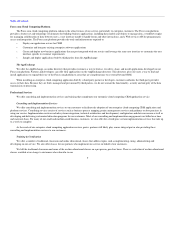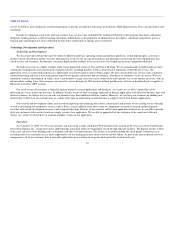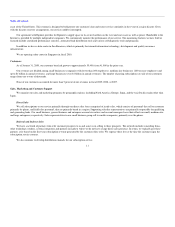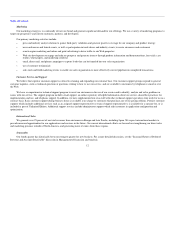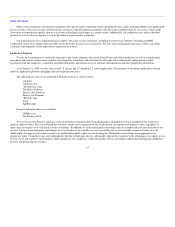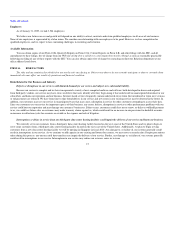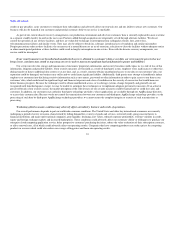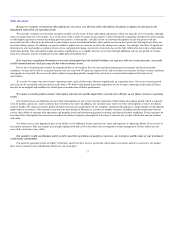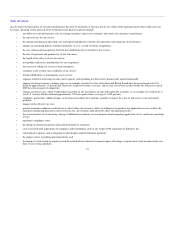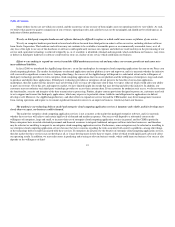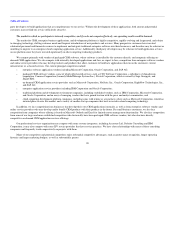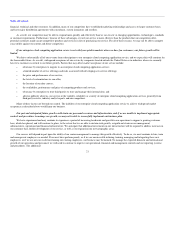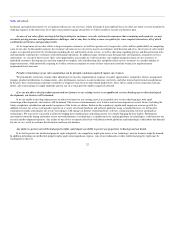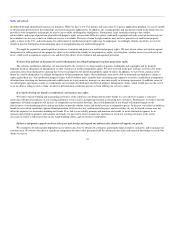Salesforce.com 2008 Annual Report Download - page 16
Download and view the complete annual report
Please find page 16 of the 2008 Salesforce.com annual report below. You can navigate through the pages in the report by either clicking on the pages listed below, or by using the keyword search tool below to find specific information within the annual report.
Table of Contents
Competition
The market for enterprise CRM business applications and development platforms is highly competitive, rapidly evolving and fragmented, and subject to
changing technology, shifting customer needs and frequent introductions of new products and services. Many prospective customers have invested substantial
personnel and financial resources to implement and integrate traditional enterprise software into their businesses, and therefore may be reluctant or unwilling
to migrate to an enterprise cloud computing application service. Additionally, third party developers may be reluctant to build application services on our
platform since they have invested significantly in other competing technology products.
We compete primarily with vendors of packaged CRM software, whose software is installed by the customer directly, and companies offering on-
demand CRM applications. We also compete with internally developed applications and face, or expect to face, competition from enterprise software vendors
and online service providers who may develop toolsets and products that allow customers to build new applications that run on the customers' current
infrastructure or as hosted services. Our current principal competitors include:
• enterprise software application vendors including Microsoft Corporation, Oracle Corporation, and SAP AG;
• packaged CRM software vendors, some of which offer hosted services, such as CDC Software Corporation, a subsidiary of chinadotcom
corporation, Consona Corporation (formerly Made2Manage Systems Inc.), Pivotal Corporation, which is owned by Sage Group plc, and
SugarCRM;
• on-demand CRM application service providers such as Microsoft Corporation, NetSuite, Inc., Oracle Corporation, RightNow Technologies, Inc.
and SAP AG.;
• enterprise application service providers including IBM Corporation and Oracle Corporation;
• traditional platform development environment companies, including established vendors, such as IBM Corporation, Microsoft Corporation, and
Oracle Corporation and an array of emerging vendors that have gained traction with the press and analyst communities; and
• cloud computing development platform companies, including some with whom we are partners, others such as Microsoft Corporation, which has
initiated plans to enter this market, and a variety of smaller start up companies that have invested in cloud computing technology.
We believe that as enterprise software application and platform vendors shift more of their focus to cloud computing, they will be a greater competitive
threat.
We believe the principal competitive factors in our market include the following:
• speed and ease of implementation;
• product functionality;
• financial stability and viability of the vendor;
• product adoption;
• ease of use and rates of user adoption;
• low total cost of ownership and demonstrable cost-effective benefits for customers;
• performance, security, scalability, flexibility and reliability of the service;
• ease of integration with existing applications;
• quality of customer support;
• availability and quality of implementation, consulting and training services; and
• vendor reputation and brand awareness.
13


